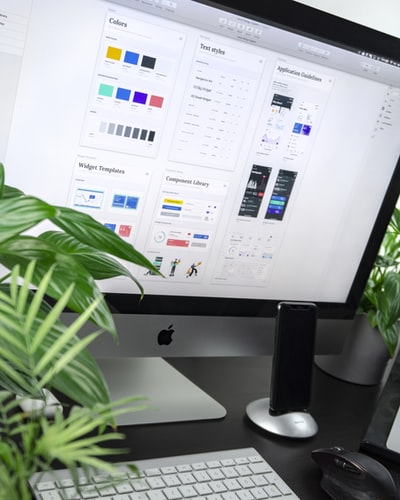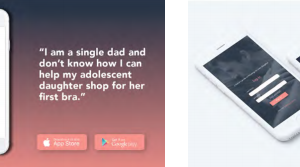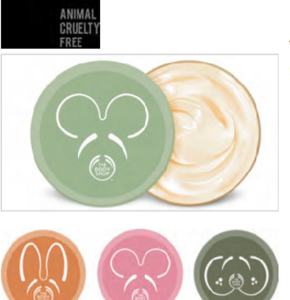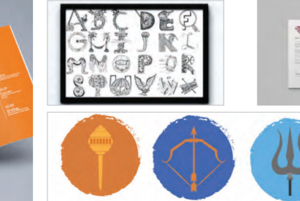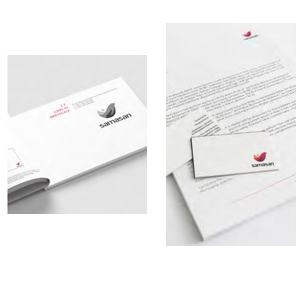Explore 7 Types of Communication Design
A Communication designer establishes relationships between the viewer and the creative. The communication designer strategically conveys messaging and engages the viewer through visual tone and language. They understand the Psyche of the consumer and accordingly translate the messaging via colors, fonts, and design elements. The design communicates on the subconscious level, and copy reinforces the same underlying message of the visual.
While abstract art is subjective and elicits different interpretations from different viewers, communication design is meant to be clear and communicative in addition to being aesthetically pleasing.
Different Types of Communication Design
Communication design is used in several different mediums which serve different purposes and target different audiences. In other words, different media channels and communication strategies give birth to types of communication. Let’s explore different types of communication design:
1. Graphic Communication Design
Graphic designing involves creating visual concepts using computer software by combining layouts, typography, images, and motion graphics in order to communicate certain ideas to the viewer. Graphic designers generally create graphic visual designs for print media and electronic media, but they are also in high demand for designing websites and blogs. Additionally, graphic designers are required for advertising, brochures, magazines, and other print media, as well as reports (both digital and print).
2. Data Visualization
Data visualization combines information and communication design. It is a form of communication design that represents information and data in a graphical form. While it may sound dry and technical, data visualization is an exciting and creative field since it is concerned with representing complex and massive data in intuitive ways to help people understand it. Data visualization often involves using charts, graphs, maps, and data visualization tools to communicate data to audiences.
Also Read: How can visual communication elevate your design experience?
3. Interaction Design
Interaction design involves designing interactive digital products, systems, services, and environments, including apps and websites. The focus of interaction design is to make the interaction of the user with the product as easy, useful, and enjoyable as possible. To a certain extent, interaction design overlaps with visual communication design, since the latter is focused on the aesthetic aspects of the interaction, while interaction design is more concerned with the communication and ease of use of the interface. This is why, to achieve its goals, interaction design makes use of the principles of good communication, since the interaction is essentially communication.
Also Read: Career options in Interaction UI/UX Design
4. Art and Illustrations
Art and illustrations refer to visual explanations or representations of ideas or processes. Usually, these are in the form of animations (TED videos are a good example of these) or illustrations. They are often the clearest form of communication and also allow a lot of creative liberty while ultimately ensuring that the required message is conveyed clearly to its audience.
5. Visual Identity
Visual identity is a type of brand communication design. It refers to the use of visuals to signify identity. Usually, this means logos, symbols, shapes, and other visual elements which are attached to a particular idea or brand in order to represent its identity. This form of communication design is concerned with making its visuals memorable, easily identifiable, and representative of the ideas of the company or concept it symbolizes.
6. Writing and Editing
This of course is the form of communication design that usually comes to mind first. It refers to verbally communicating ideas in a comprehensible manner. This includes promotional content, blogs, newspaper articles, fiction novels, journals, informational documents, articles, and copy on advertising.
7. Information Architecture
Perhaps one of the most complex forms of communication design, information architecture involves designing the structure of shared information environments. This means organizing, structuring, and labeling information in order to help users find information easily. Examples include organizing and labeling websites and content, organizing information on online communities, structuring online databases in a user-friendly and sustainable manner to enable users to locate information easily, and so on.
How ISDI Can Help
After the 12th, designing courses are offered all over India. If you are looking for courses to pursue a career in communication design after the 12th, ISDI is the place for you. We offer a comprehensive 4-year undergraduate program to help students understand, explore and practice communication design in order to equip themselves with the knowledge and competence to succeed in the field. Our course includes subject matter and training in the theory of behavior and strategic use of technology, typography, interactive design, visual design aspects in illustration, photography and audio-visual media, graphic and print design, brand identity and image systems, and more. Additionally, our curriculum has been established in collaboration with Parsons School of Design, a world leader in art and design education.

